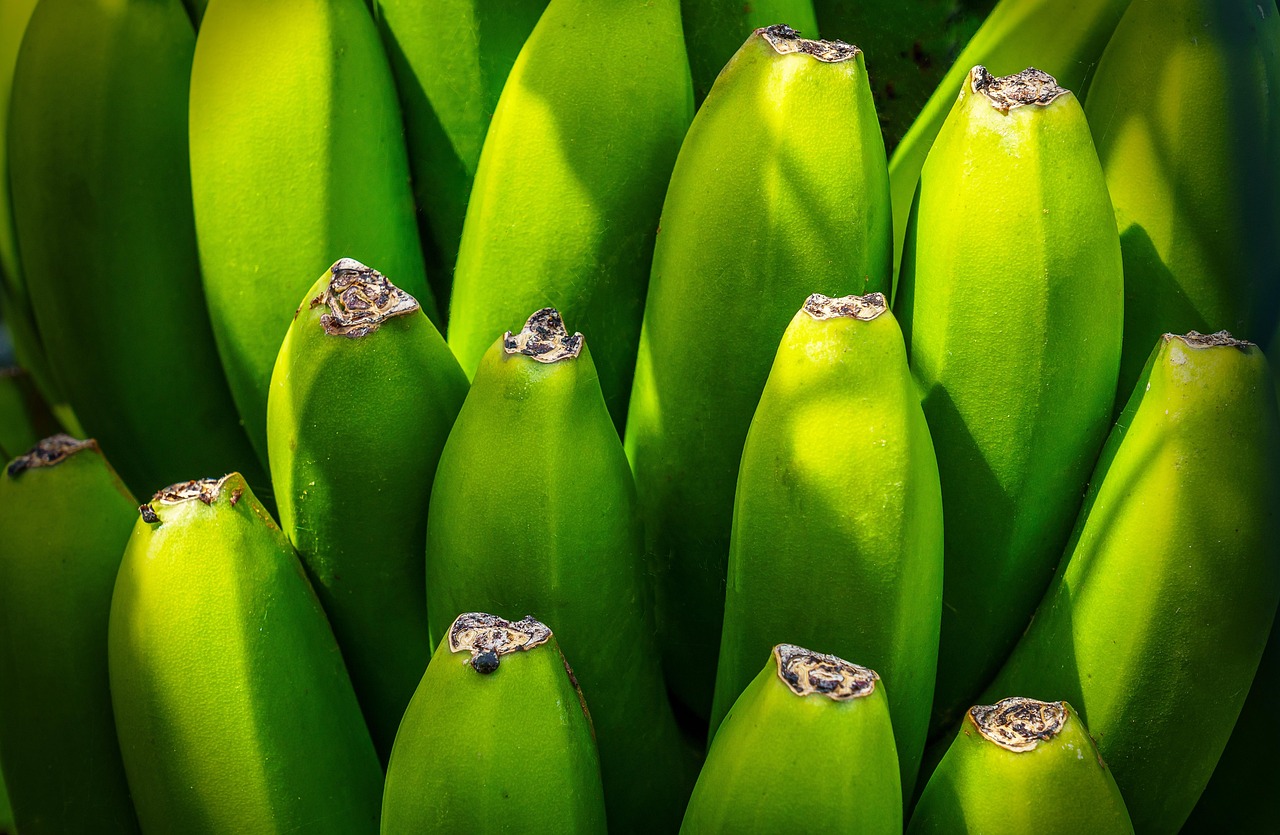Five key growth rate metrics for tree health assessment include height growth, diameter at breast height (DBH), crown growth, leaf area index (LAI), and root-to-shoot ratio. These metrics provide valuable insights into the overall vitality and health of trees.
Understanding Tree Health Metrics
Monitoring tree health is essential for maintaining healthy ecosystems and urban environments. Trees play a vital role in carbon sequestration, providing shade, and enhancing biodiversity. Assessing tree health involves various metrics, which can indicate how well a tree is growing and thriving in its environment.

Tree growth metrics are crucial for arborists, land managers, and researchers. They help in making informed decisions regarding tree care, conservation efforts, and urban planning. Understanding these metrics can lead to better management practices that promote tree longevity and resilience against diseases and environmental stressors.
Key Growth Rate Metrics
The following are five key metrics used to assess tree health:
- Height Growth: This metric measures the vertical growth of a tree over time. It indicates how well a tree is adapting to its environment and can be influenced by factors such as sunlight, soil quality, and water availability.
- Diameter at Breast Height (DBH): DBH is a standard measure taken at 4.5 feet above ground level. It provides insights into the trunk’s thickness and overall biomass accumulation, which are important indicators of tree health.
- Crown Growth: The crown of a tree is its upper part, consisting of branches and leaves. Monitoring crown growth helps assess the tree’s ability to photosynthesize effectively. A healthy crown will indicate a robust tree.
- Leaf Area Index (LAI): LAI quantifies the amount of leaf area per unit ground area. This metric is vital for understanding photosynthetic capacity and energy balance within the tree ecosystem.
- Root-to-Shoot Ratio: This metric compares the biomass of a tree’s roots to its shoots (stems and leaves). A balanced ratio indicates healthy growth, while an imbalance may suggest stress factors affecting the tree.
The Importance of Each Metric
Each of these metrics provides unique insights into different aspects of tree health. For instance, height growth can indicate how well a tree is competing for resources like light. In contrast, DBH offers a more direct measure of biomass accumulation, which is essential for carbon storage assessments.

Crown growth reflects not only the health of the tree but also its ability to thrive in its specific environment. A well-developed crown typically means that a tree has access to adequate sunlight and nutrients. Conversely, stunted crown growth can signal issues such as overcrowding or disease.
Leaf Area Index is particularly valuable for understanding a tree’s energy production capabilities. Trees with higher LAI values can capture more sunlight, leading to improved growth rates and overall health. Regular monitoring of LAI can help in assessing the impact of environmental changes on tree health.
The root-to-shoot ratio is critical for evaluating how trees allocate resources between their below-ground and above-ground structures. A healthy balance allows trees to optimize their water and nutrient uptake while ensuring adequate photosynthesis. Monitoring this ratio can help identify trees that are under stress due to adverse conditions.

Additional Factors to Consider
While these five metrics are essential for assessing tree health, other factors should also be taken into account. These include soil quality, water availability, pest and disease pressures, and competition from other vegetation. All these elements interact to determine the overall health and growth potential of trees.
It is crucial to use a holistic approach when evaluating tree health. By integrating multiple metrics and considering external factors, arborists can develop comprehensive management plans that ensure the longevity of trees in various environments.
Methods for Measuring Growth Rate Metrics
To effectively assess tree health, it is essential to know how to measure the key growth rate metrics accurately. Each metric requires specific methods and tools to ensure reliable data collection. Here are some common techniques used in the field.
Height Growth Measurement
Measuring the height of a tree can be accomplished using various methods. The most common techniques include:

- Clinometer: A clinometer is a device that measures angles of elevation or depression. By standing a known distance away from the tree, the angle to the top of the tree can be measured, allowing for height calculation using trigonometry.
- Laser Rangefinder: This device accurately measures the distance to the top of the tree using laser technology. It provides quick and accurate height measurements without needing to physically scale the tree.
- Height Stick: For smaller trees, a simple height stick can be used. This involves physically measuring the tree with a measuring tape or pole.
Diameter at Breast Height (DBH) Measurement
DBH is typically measured using a diameter tape or calipers. The following steps outline the process:
- Identify the correct height for measurement (4.5 feet above ground). Ensure the tree is free from any obstructions.
- Wrap the diameter tape around the trunk at the specified height. If using calipers, place them around the trunk and read the measurement directly.
- Record the value, ensuring accuracy to monitor changes over time.
Crown Growth Assessment
Crown growth can be evaluated visually or quantitatively. Some methods include:
- Crown Projection Area: Measure the diameter of the crown at its widest point. This can help estimate the area of coverage.
- Photography: Taking regular photographs of the crown from various angles can help track changes over time. Comparing photos can reveal growth patterns and health issues.
Leaf Area Index (LAI) Measurement
Measuring LAI can be more complex and may involve specialized equipment. Common methods include:
- Optical Sensors: Devices like ceptometers measure light transmission through the canopy. This provides data on leaf area compared to ground area.
- Destructive Sampling: Involves collecting leaves from a known area, measuring their surface area in a lab setting, and calculating LAI based on these samples.
Root-to-Shoot Ratio Determination
The root-to-shoot ratio can be challenging to measure but is crucial for understanding overall tree health. Common approaches include:
- Excavation: Carefully excavating roots while preserving the tree allows for direct measurement of root biomass compared to shoot biomass.
- Modeling: Using mathematical models to estimate root biomass based on shoot characteristics can offer a non-invasive alternative.
The Role of Technology in Tree Health Assessment
Modern technology plays a significant role in enhancing tree health assessments. Various tools and techniques streamline data collection and analysis, resulting in more accurate evaluations.
Remote Sensing
Remote sensing technology uses satellite imagery and aerial photography to provide a broader view of forest health and growth patterns. Key benefits include:
- Large Area Coverage: Remote sensing allows for monitoring extensive forested areas efficiently.
- Change Detection: It enables quick identification of changes in vegetation health over time due to environmental factors or anthropogenic influences.
Drones in Tree Monitoring
Drones equipped with cameras and sensors can capture high-resolution images and data for individual trees or entire forests. Advantages include:
- Accessibility: Drones can reach areas that are difficult for humans to access, making them invaluable for remote locations.
- Data Collection Speed: Drones can quickly collect large amounts of data, aiding in timely assessments and interventions.
Data Analysis Software
Advanced software tools help analyze data collected from various measurements and technologies. These tools provide insights into growth trends, health assessments, and predictive modeling for future growth scenarios.
The integration of technology into traditional assessment methods enhances accuracy and efficiency in monitoring tree health metrics, leading to better management practices.
Interpreting Growth Rate Data
Once the growth rate metrics are collected, interpreting the data accurately is essential for assessing tree health. Arborists and land managers must understand how to analyze and make sense of the information gathered from various methods and technologies.
Understanding Growth Patterns
Growth patterns can reveal significant insights into the health and vitality of trees. Analyzing these patterns involves looking at both short-term and long-term data. Here are some key points to consider:
- Annual Growth Rates: Comparing annual growth rates in height, DBH, and crown expansion can indicate health trends. Consistent growth over several years typically signifies a healthy tree.
- Seasonal Variations: Seasonal growth patterns can provide insights into how trees respond to environmental factors like temperature, precipitation, and sunlight. Understanding these variations can inform better management practices.
- Comparative Analysis: Comparing growth metrics across different species or tree populations can help identify which trees are thriving and which may be struggling due to specific stressors.
Indicators of Stress
Deviations from expected growth patterns often indicate stress or decline in tree health. Some common indicators include:
- Stunted Growth: A sudden decrease in height or DBH could signal inadequate resources, such as water or nutrients.
- Crown Decline: A reduced crown size or thinning foliage may indicate competition, disease, or environmental stress.
- Increased Mortality Rates: High mortality rates within a population can suggest underlying issues affecting overall health, such as pests or pathogens.
Data Visualization Techniques
Visualization of growth rate data enhances understanding and interpretation. Here are some effective techniques:
- Graphs and Charts: Line graphs can effectively show changes in metrics over time, while bar charts can compare different trees or populations.
- Heat Maps: These can visualize spatial data, showing areas of higher growth or stress within a forested region.
- Dashboards: Utilizing data dashboards allows for real-time monitoring and analysis of multiple metrics in one interface.
Implementing Management Strategies
The insights gained from analyzing growth rate metrics should translate into actionable management strategies aimed at promoting tree health. Effective management requires a proactive approach based on data-driven decisions.
Targeted Interventions
Based on the data, specific interventions can be implemented. These may include:
- Nutrient Management: If nutrient deficiencies are identified, soil testing can guide fertilization efforts to improve tree health.
- Irrigation Practices: In areas experiencing drought stress, implementing irrigation can help maintain optimal growth conditions.
- Pest and Disease Control: Regular monitoring can assist in early detection of pests and diseases, allowing for timely intervention.
Ecosystem Considerations
Management strategies should also consider the broader ecosystem. Healthy trees contribute to biodiversity and overall ecosystem resilience. Some strategies include:
- Diversity Planting: Encouraging a diverse range of tree species can improve resilience against pests and diseases.
- Habitat Preservation: Protecting existing habitats supports wildlife and contributes to ecosystem stability.
- Sustainable Practices: Implementing sustainable forestry practices ensures that tree populations remain healthy over the long term.
Community Engagement
Engaging local communities in tree management efforts can enhance the success of initiatives. Community involvement fosters a sense of stewardship and responsibility for local ecosystems. Some effective engagement strategies include:
- Education Programs: Organizing workshops and educational programs can raise awareness about the importance of tree health and proper care.
- Volunteer Opportunities: Providing opportunities for locals to participate in tree planting and maintenance projects encourages community investment in local resources.
- Partnerships with Organizations: Collaborating with local environmental groups can enhance resource availability and expertise.
Case Studies in Tree Health Assessment
Examining successful case studies provides valuable insights into practical applications of growth rate metrics in real-world scenarios. Analyzing these examples can inspire effective management strategies and highlight best practices.
Urban Tree Canopy Assessment
A city conducted an assessment of its urban tree canopy using a combination of drone imagery and ground measurements. The objectives were to evaluate tree health and determine areas needing improvement. Key findings included:
- A significant portion of the canopy showed signs of stress due to urban heat effects.
- Targeted watering programs were implemented in high-stress areas, leading to improved tree health over subsequent years.
Forest Restoration Project
A forest restoration initiative utilized growth rate metrics to monitor tree recovery after a wildfire. The project employed remote sensing and ground-level assessments to track growth trends. Outcomes included:
- The identification of species that thrived post-fire conditions, guiding future planting efforts.
- A successful reforestation effort that restored biodiversity and improved ecosystem resilience.
These case studies demonstrate the importance of integrating various assessment methods for effective tree health management. By learning from past successes, practitioners can develop informed strategies that promote sustainable tree care.
Future Directions in Tree Health Assessment
As technology continues to advance, the methods used for assessing tree health are also evolving. Future directions in tree health assessment will likely incorporate even more sophisticated tools and techniques. Here are some potential avenues for growth in this important field:
Integration of Artificial Intelligence
Artificial intelligence (AI) has the potential to revolutionize tree health assessment. By analyzing large datasets from various sources, AI can identify patterns that may not be immediately apparent to human observers. Some aspects of AI integration include:
- Predictive Analytics: AI algorithms can predict future tree growth patterns based on historical data, environmental conditions, and species characteristics.
- Automated Image Analysis: Machine learning can enhance the analysis of aerial images and ground photos to detect early signs of disease or stress.
- Decision Support Systems: AI-driven systems can assist land managers in making informed decisions about intervention strategies based on real-time data.
Enhanced Community Involvement through Citizen Science
Engaging the public in tree health assessments can provide valuable data while fostering a sense of community involvement. Citizen science initiatives can take many forms:
- Tree Monitoring Programs: Local volunteers can be trained to monitor specific trees or areas, reporting their observations through mobile apps.
- Educational Workshops: Workshops can teach community members how to assess tree health and the importance of urban forestry.
- Crowdsourced Data Collection: Using technology, individuals can contribute to a centralized database that tracks tree health metrics across different regions.
Emphasis on Climate Resilience
As climate change continues to impact ecosystems worldwide, assessing tree health will increasingly focus on resilience. Strategies to promote climate resilience in trees may include:
- Drought-Resistant Species: Planting native and drought-resistant species in urban environments can help maintain tree health during dry periods.
- Adaptive Management Practices: Regularly updating management practices based on changing climatic conditions will support long-term tree health.
- Restoration of Ecosystem Functions: Ensuring that trees provide critical ecosystem services, such as carbon sequestration and habitat provision, is essential for resilience.
Final Thoughts
The assessment of tree health through key growth rate metrics is crucial for sustainable forestry and urban planning. Understanding metrics such as height growth, diameter at breast height, crown growth, leaf area index, and root-to-shoot ratio equips arborists and land managers with the necessary tools to make informed decisions regarding tree care.
As we have explored, the integration of technology, data analysis, and community involvement enhances our ability to monitor and manage tree health effectively. The case studies presented highlight successful applications of these metrics and underscore the importance of a holistic approach to tree management.
The future of tree health assessment looks promising with advancements in AI, citizen science initiatives, and a focus on climate resilience. By continuing to innovate and adapt our strategies, we can ensure that our trees remain healthy and vibrant for generations to come. Ultimately, investing in tree health not only benefits individual trees but also strengthens our ecosystems and communities at large.
In conclusion, adopting these growth rate metrics and utilizing modern technology will pave the way for improved tree health assessments. This proactive approach is essential for preserving our natural resources and fostering sustainable environments in both rural and urban settings.
